A flat dosa tawa is a specialized griddle used for making dosas, a popular South Indian crepe-like pancake. The dosa can be cooked in a manner that is consistent because the tawa has a surface that is both flat and smooth. This makes it possible for an even distribution of heat. It is an important appliance in Indian kitchens, particularly in South India, where dosas are frequently eaten for breakfast or as a light snack.
Table of Contents
Key features of a flat dosa tawa:
- Flat and Smooth Surface: The tawa has a flat and smooth cooking surface, which helps in spreading the dosa batter evenly and achieving a consistent texture throughout the dosa.
- Size: Flat dosa tawas come in various sizes, typically ranging from 9 to 12 inches in diameter. The size allows for making dosas of different thicknesses and diameters.
- Material:
- Cast Iron: Cast iron dosa tawas are known for their excellent heat retention, even heat distribution, and the ability to create perfectly crisp dosas.
- Non-stick: Non-stick dosa tawas have a non-stick coating on the cooking surface, making it easier to flip and release the dosa without sticking. They require less oil or ghee for cooking.
- Aluminum: Aluminum dosa tawas are lightweight, heat up quickly, and are suitable for making dosas in a short time.
- Heat Source: Flat dosa tawas are designed to be used on gas stoves or open flames, as direct heat sources provide the necessary heat
Difference Between Flat Tawa And Concave Tawa:
Flat Dosa Tawa:
- Even Cooking: A flat dosa tawa offers even heat distribution, ensuring that the dosa cooks uniformly throughout its surface.
- Crispy Texture: The flat surface allows for a larger area of direct contact with the dosa, resulting in a crispy texture.
- Ease of Spreading: It is relatively easier to spread the dosa batter evenly on a flat tawa due to its smooth surface.
- Ideal for Thin Dosas: If you prefer thin and crispy dosas, a flat tawa is a good choice.
Concave Dosa Tawa:
- Retains Oil and Batter: The concave shape helps retain oil or ghee, ensuring that the dosa is well-coated and doesn't dry out during cooking.
- Retains Heat: The concave design holds the heat better, making it ideal for making dosas that require a slightly longer cooking time, such as thicker or stuffed dosas.
- Traditional Appeal: In some regions and traditional cooking methods, dosas are made on a concave tawa, adding to the authenticity of the dish.
- Suitable for Thicker Dosas: If you prefer thicker dosas or dosas with fillings, a concave tawa can be a better option.
Benefits of Flat Dosa Tawa:
Using a flat dosa tawa can make the process of making dosas easier and more efficient. Here's how a flat dosa tawa helps in the ease of making dosas:
- Even Heat Distribution: A flat dosa tawa provides even heat distribution across its surface. This helps in uniformly cooking the dosa, ensuring that it is evenly browned and crispy throughout.
- Quick Cooking: The even heat distribution and flat surface of the tawa allow for quick cooking of dosas. Dosas are typically thin, and using a flat tawa ensures that they cook in a short amount of time, reducing the cooking process.
- Smooth Surface: The smooth surface of a flat dosa tawa makes it easier to spread the dosa batter evenly. This is crucial for achieving thin and uniform dosas, as the batter spreads easily without any uneven patches.
- Ease of Flipping: Flipping the dosa during cooking becomes simpler on a flat tawa. The dosa slides easily on the smooth surface, making it convenient to turn and cook the other side.
- Crispy Texture: The flat surface of the tawa allows for a larger area of direct contact with the dosa batter. This results in a dosa with a deliciously crispy texture, which is one of the key characteristics of a well-made dosa.
- Versatility: Apart from dosas, a flat dosa tawa can also be used to make other Indian flatbreads like uttapam, cheela, and pancakes, making it a versatile addition to the kitchen.
- Minimal Oil Usage: Using a flat dosa tawa requires minimal oil or ghee, making it a healthier option for preparing dosas.
- Traditional Cooking: The flat dosa tawa is a traditional tool used for generations to make dosas in Indian households. Its design and utility have stood the test of time, ensuring a time-honored and authentic dosa-making experience.
Dosa preparation does require some talent and some experience, but if you use a flat dosa tawa, the procedure is greatly simplified, and the dosas that you make will be more delicious and consistent. Whether you are an experienced chef or just starting out in the kitchen, a flat dosa tawa can be an invaluable tool to have in your arsenal for making the ideal dosas quickly and easily.
Use and Care of Flat Dosa Tawa:
It is necessary to use a flat dosa tawa and properly care for it in order to preserve its longevity and achieve its maximum potential. The following are some pointers to keep in mind when using and caring for a flat dosa tawa:
Before First Use:
- Wash the tawa with warm soapy water to remove any manufacturing residues or dust.
- Rinse thoroughly and dry the tawa completely.
- If the tawa is made of cast iron, season it by spreading a thin layer of oil over the whole surface of the cooking area and then heating it on a low to medium fire for about ten to fifteen minutes. Repeat this process a few times until the surface of the tawa is completely smooth and no longer adheres to food.
Using the Flat Dosa Tawa:
- Before adding the dosa batter, let the tawa heat up for a few minutes over a medium flame to get it ready.
- After the tawa has reached the desired temperature, dot the surface with a few droplets of water. The tawa is ready to be used after the water begins to bubble and evaporate almost immediately after being added.
- Pour a ladleful of dosa batter at the center of the tawa and spread it in a circular motion using the back of the ladle or a flat-bottomed cup. Create a thin and even layer.
- To prevent the dosa from sticking to the tawa while it is cooking, drizzle a little bit of oil or ghee around the edges of the pancake.
- Cook the dosa on medium to high heat until the edges turn golden-brown and the surface becomes crispy.
- Dosa should be flipped with caution using a flat spatula, and the other side should be cooked for a little period of time until it is finished.
Cleaning and Care:
- Allow the tawa to cool down completely after use.
- Wash the tawa with warm water and a soft sponge or brush to remove any food residues.
- It is important to avoid using harsh chemicals and scrubbers, as they have the potential to scratch the surface of the tawa.
- If the tawa is made of cast iron and is seasoned, avoid using soap while washing, as it can remove the seasoning.
- After washing, wipe the tawa dry and store it in a cool and dry place to prevent rusting (for cast iron tawas).
- If your tawa is non-stick or has a coating, avoid using metal utensils to prevent scratching the non-stick surface.
Seasoning (for Cast Iron Tawas):
- Periodically, you may need to re-season your cast iron dosa tawa to maintain its non-stick properties.
- To re-season, apply a thin layer of oil all over the cooking surface.
- Heat the tawa on low to medium heat for about 10-15 minutes, allowing the oil to bond with the metal and create a protective layer.
By following these guidelines for using and caring for your flat dosa tawa, you can enjoy delicious dosas for years to come. Whether it's a traditional cast iron tawa or a modern non-stick version, proper care and maintenance will ensure its longevity and optimal performance.

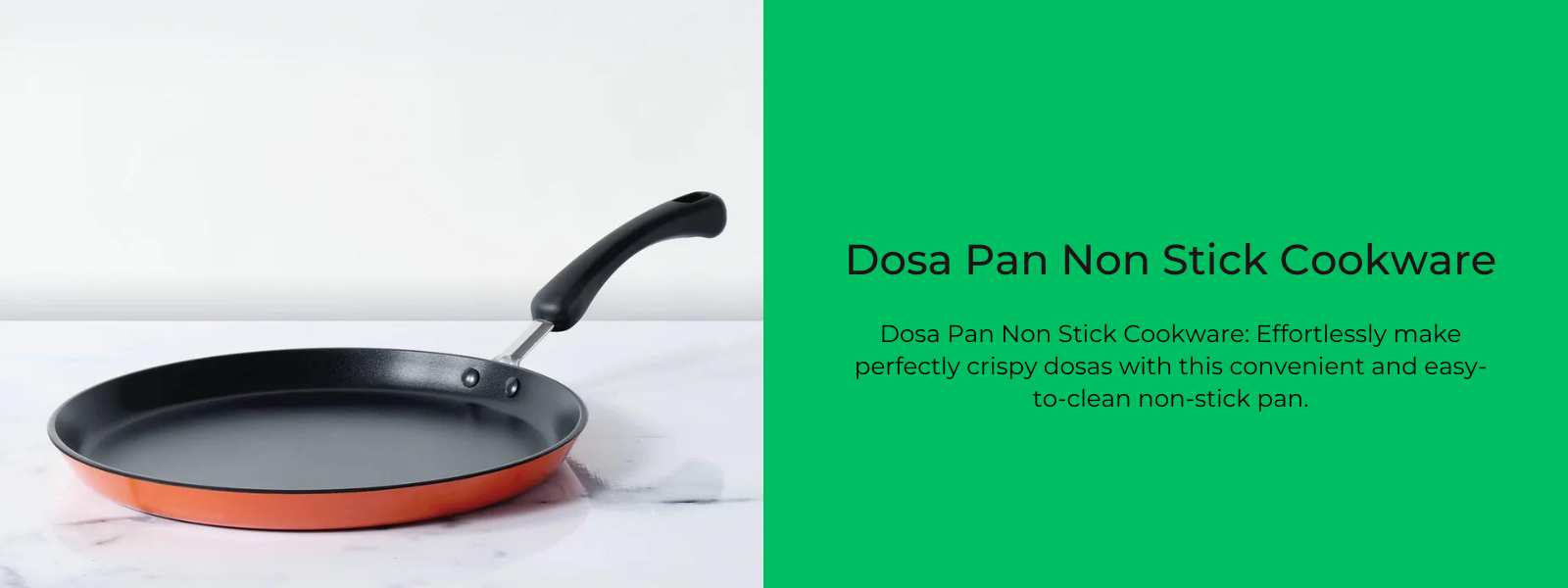
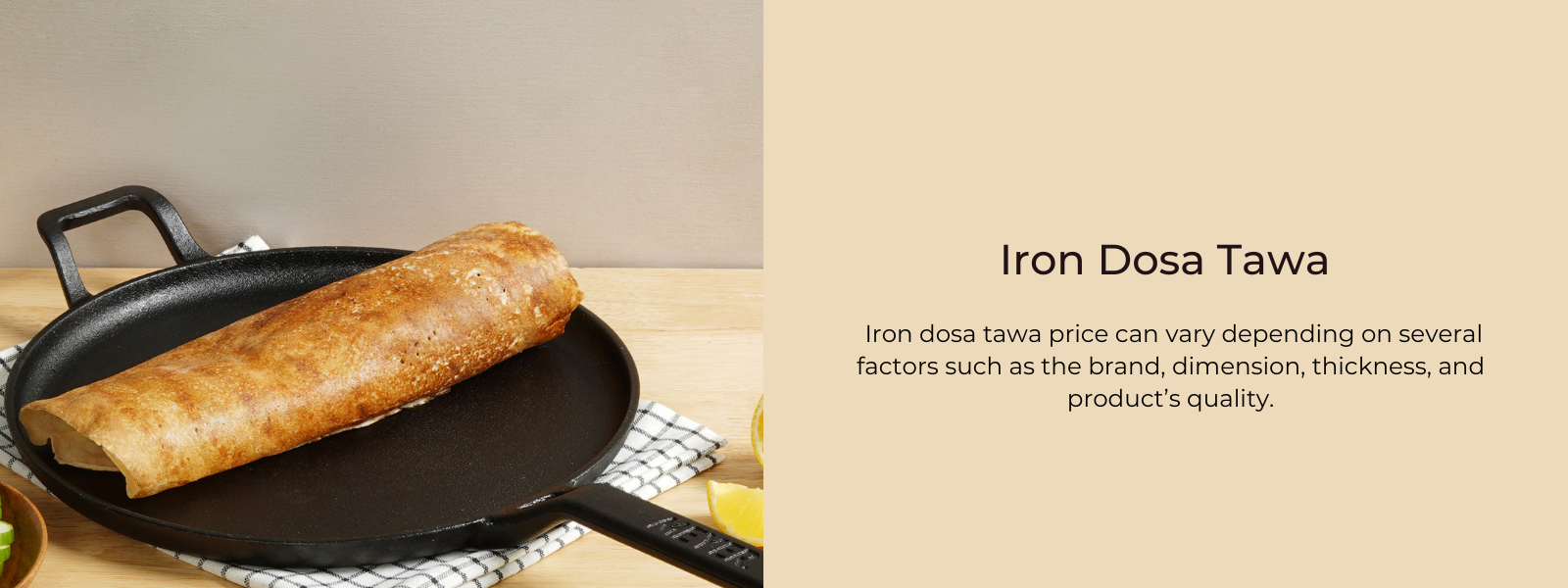
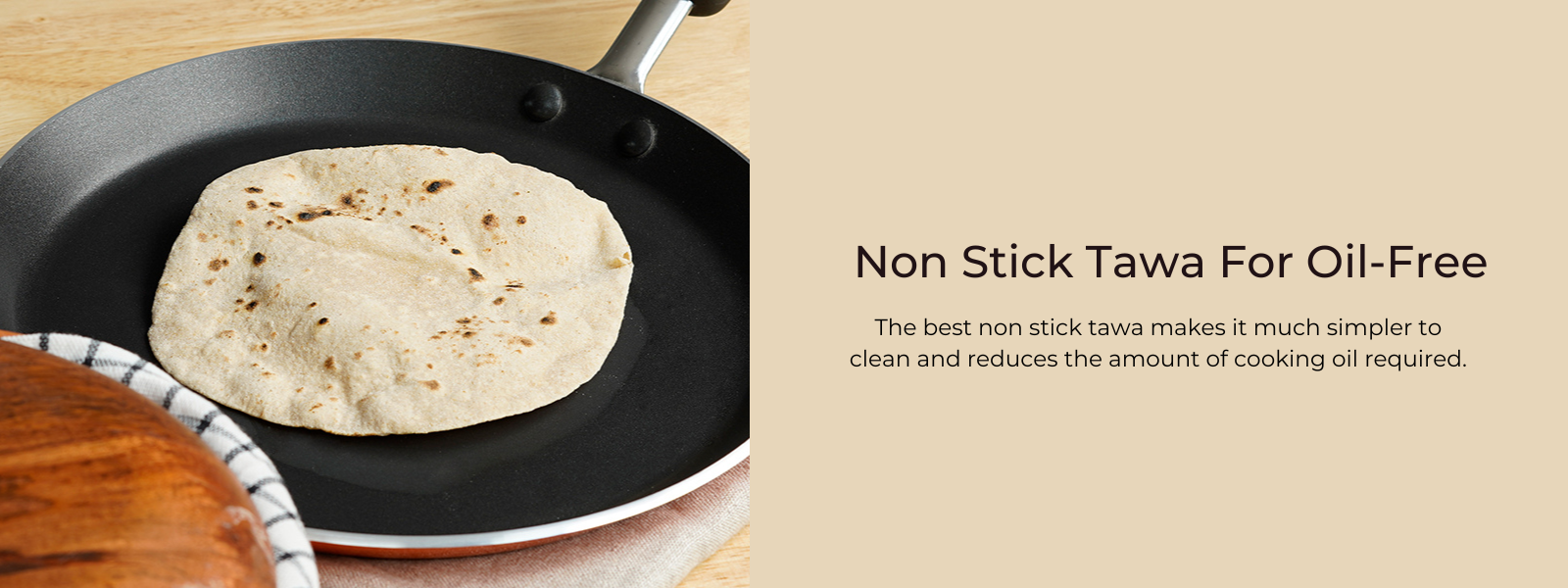
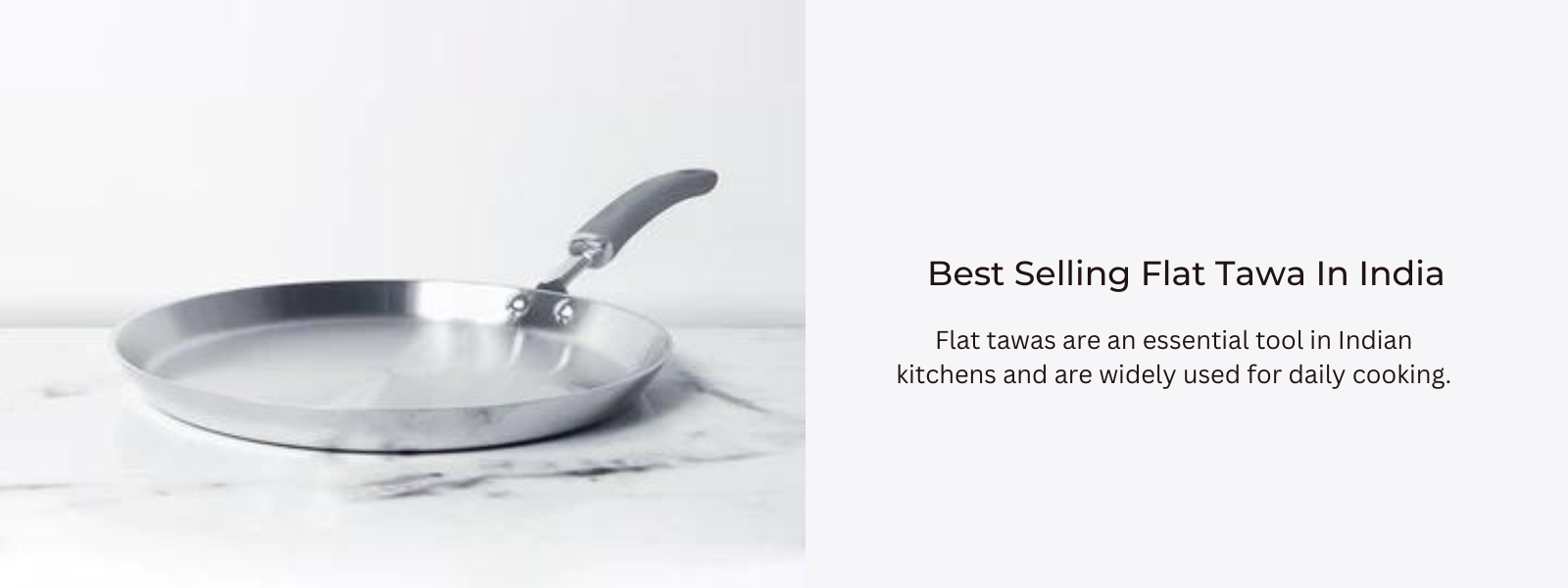
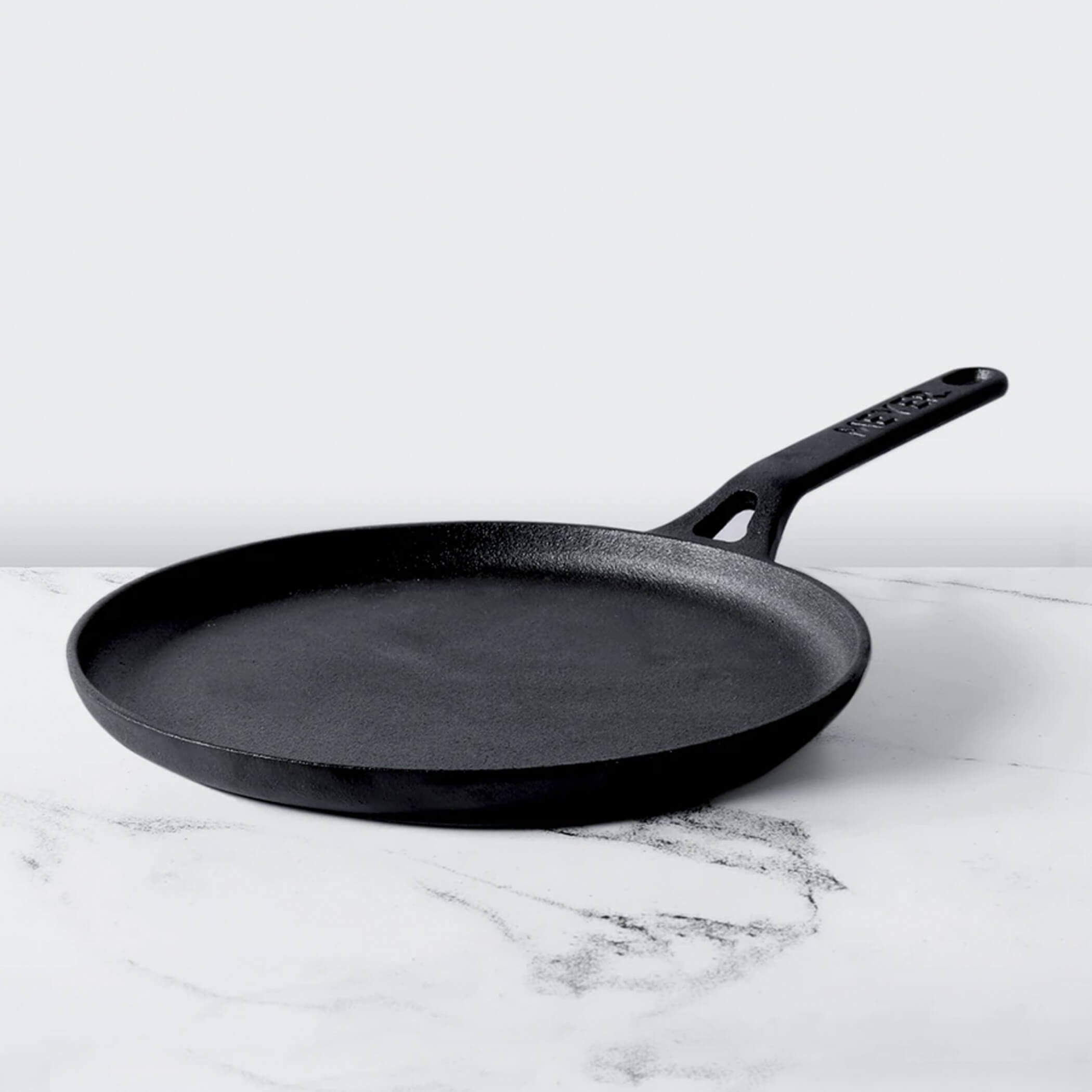




Leave a comment